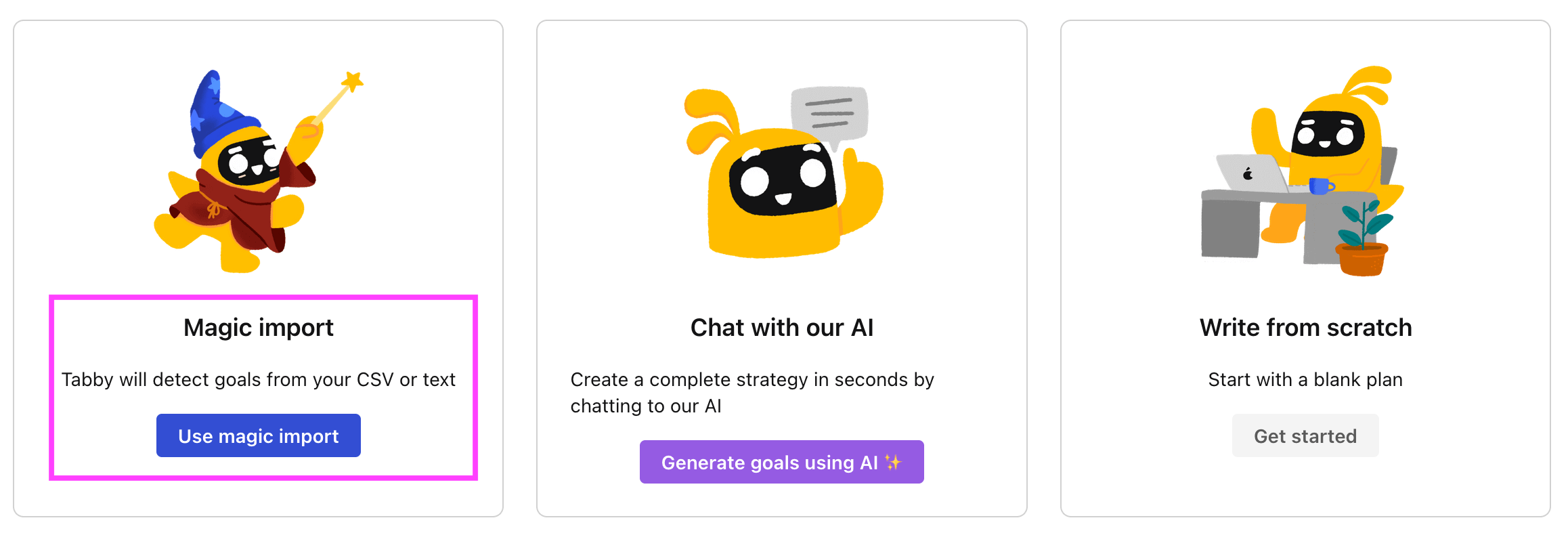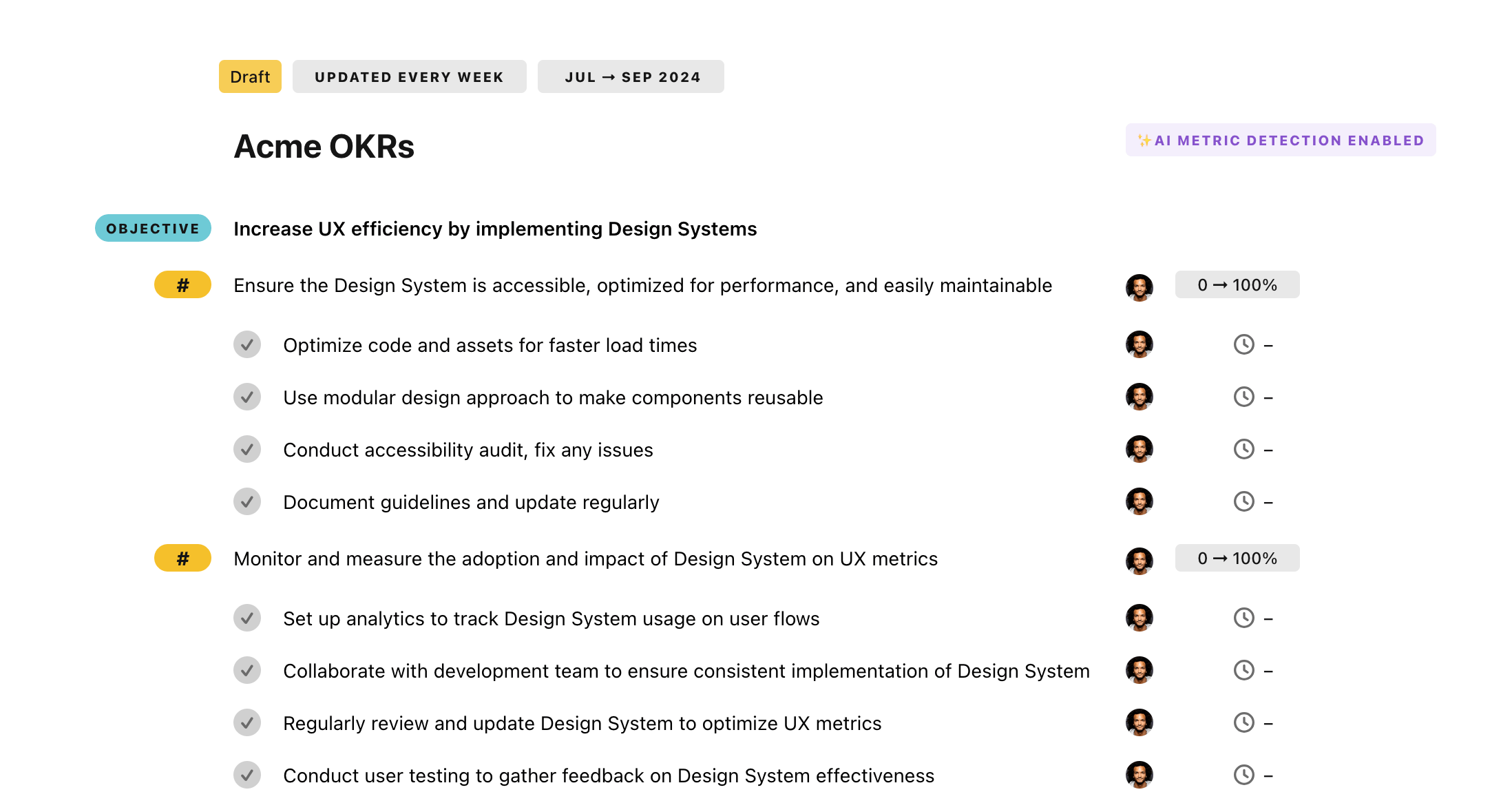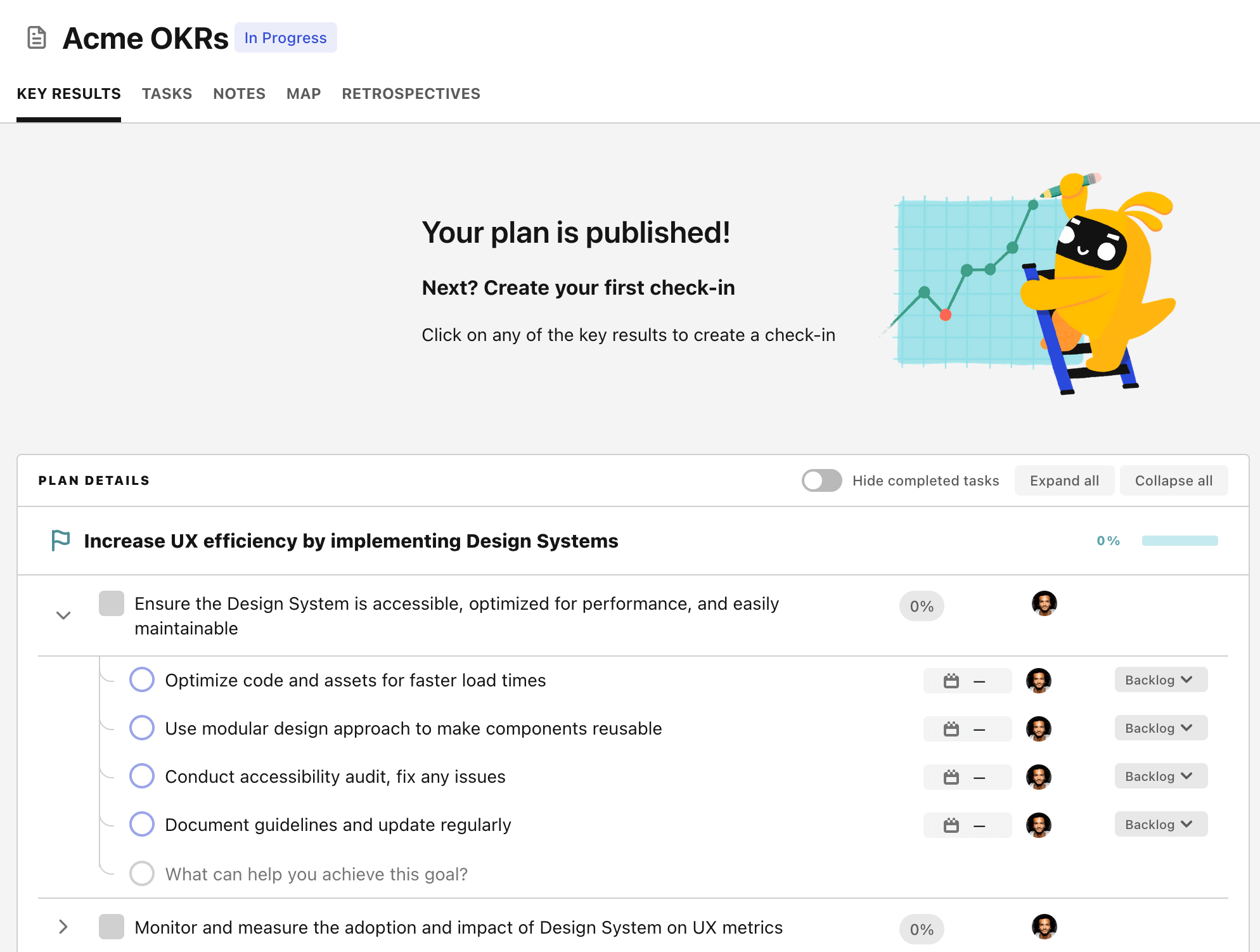OKR template to develop an effective project portfolio management software
Your OKR template
Secondly, the strategy aims to finalize software features and its design, based on client needs assessment. This will be achieved by re-engineering the software according to client feedback, conducting surveys to ascertain customers’ preferences and necessities, and then using the data obtained from these surveys to finalize software features and design.
The third objective prioritizes alpha testing and debugging, with an aim to achieve a 97% success rate. Initiatives for this include identifying and documenting all software defects, conducting comprehensive alpha testing, and fixing identified bugs to meet the targeted success rate.
Lastly, throughout the implementation of these objectives, there is a constant focus on the progression from a starting point of 0.0 to full completion at 100.0, using a scoring format based on percentages to measure advancement.
ObjectiveDevelop an effective project portfolio management software
KRAccomplish robust coding for 90% of identified features
Prioritize and list the most critical identified features
Develop code for prioritized features
Thoroughly test and refine the code
KRFinalize the software's features and design by conducting client needs assessment
Re-engineer software based on clients' needs and desires
Survey clients about specific feature needs and design preferences
Analyze survey results for software feature and design finalization
KRComplete software alpha testing and bug fixing with a 97% success rate
Fix identified bugs to achieve 97% success rate
Identify and document all software bugs
Execute comprehensive alpha testing on the software
How to edit and track OKRs with Tability
You'll probably want to edit the examples in this post, and Tability is the perfect tool for it.
Tability is an AI-powered platform that helps teams set better goals, monitor execution, and get help to achieve their objectives faster.
With Tability you can:
- Use AI to draft a complete set of OKRs in seconds
- Connect your OKRs and team goals to your project
- Automate reporting with integrations and built-in dashboard
Instead of having to copy the content of the OKR examples in a doc or spreadsheet, you can use Tability’s magic importer to start using any of the examples in this page.
The import process can be done in seconds, allowing you to edit OKRs directly in a platform that knows how to manage and track goals.
Step 1. Sign up for a free Tability account
Go tohttps://tability.app/signup and create your account (it's free!)
Step 2. Create a plan
Follow the steps after your onboarding to create your first plan, you should get to a page that looks like the picture below.

Step 3. Use the magic importer
Click on Use magic import to open up the Magic Import modal.
Now, go back to the OKR examples, and click on Copy on the example that you’d like to use.

Paste the content in the text import section. Don’t worry about the formatting, Tability’s AI will be able to parse it!

Now, just click on Import from text and let the magic happen.

Once your example is in the plan editor, you will be able to:
- Edit the objectives, key results, and tasks
- Click on the target 0 → 100% to set better target
- Use the tips and the AI to refine your goals
Step 4. Publish your plan
Once you’re done editing, you can publish your plan to switch to the goal-tracking mode.

From there you will have access to all the features that will help you and your team save hours with OKR reporting.
- 10+ built-in dashboards to visualise progress on your goals
- Weekly reminders, data connectors, and smart notifications
- 9 views to map OKRs to strategic projects
- Strategy map to align teams at scale